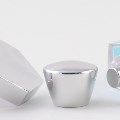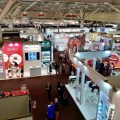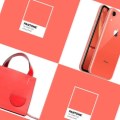If this is your company, CONTACT US to activate Packbase™ software to build your portal.


At some time or other we have all taken something in our hand, only to discard it as tacky, shoddy or too simplistic for our tastes. The same applies to the packaging used for cosmetics, or its parts. Heavy packaging with thicker walls is considered sturdy and more luxurious by customers. Of course, this is not always the case, but this does not change the fact that cosmetics and perfume manufacturers have taken greater efforts to convince their customer base that their packaging is indeed luxurious, such as by increasing its weight.
Packaging market over the years
The cosmetics and perfume packaging market is now dominated by two material groups – glass and plastics. Glass as a material has, of course, a longer tradition in the industry, its history spanning the several centuries since it replaced ceramics.
The 20th century saw different kinds of plastics emerging as competition. These new materials did not crack as easily, their production became increasingly simple and relatively inexpensive, and they could be produced on a mass scale. This has resulted in plastics replacing glass for good in many cases. However, the plastics used in the cosmetics industry are typically a great deal lighter than glass, which has proved to be an important variable, one which frequently influences customer decisions.
We are nearing the third decade of the 21st century, and perfume flasks are where glass is making its final stand. Many cream manufacturers opt to use jars made of plastics like Surlyn, which is extremely similar to glass. Other cosmetic products made the switch a long time ago, opting for dispenser bottles, sticks and tubes.
Why is weight associated with luxury?
Whenever plastics begin to dominate, though, the issue of packaging weight is raised. Light packaging with thin walls is often subconsciously assessed by customers as tacky, shoddy and too common-looking. Customers want products whose characteristics place them in the premium category, and that means products that are heavier. The plastic packaging industry has not had its last word, because even now there are plenty of other ways to lend an air of luxury to products made of such materials.
How to increase the weight of the packaging?
One of the options is to use new, high-density materials, or to combine regular materials with heavier ones. Taboren and Gravi-Tech are two materials gaining ground in the production of cosmetics and perfume packaging. Components made using these types of materials can be heavier than glass while retaining the advantages of plastics, e.g. resistance to cracking.
Another method of increasing packaging weight is to add some ballast. Such weights can be hidden in multi-part perfume bottle caps, as well as in cosmetics jar lids. It is also possible to make packaging walls thicker to maximise surface use and increase their weight.
Polymers appear to be at a disadvantage compared to glass when it comes to cosmetics packaging, but appearances are deceptive in this case. If we analyse the advantages offered by some synthetic compounds and the fact that particular parts can have additional ballast hidden inside, the disadvantage disappears and customers benefit twofold. The weight is similar to glass, without sacrificing the advantages of plastics.





















































